
The Thomisidae are a family of spiders, including about 170 genera and over 2,100 species. The common name crab spider is often linked to species in this family, but is also applied loosely to many other families of spiders. Many members of this family are also known as flower spiders or flower crab spiders.
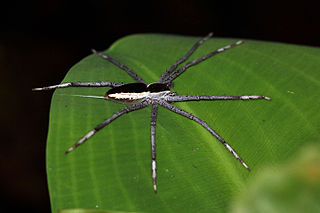
Nursery web spiders (Pisauridae) is a family of araneomorph spiders first described by Eugène Simon in 1890. They resemble wolf spiders (Lycosidae) except for several key differences. Wolf spiders have two very prominent eyes in addition to the other six, while a nursery web spider's eyes are all about the same size. Additionally, female nursery web spiders carry their egg sacs with their jaws and pedipalps instead of attaching them to their spinnerets as wolf spiders do. When the eggs are about to hatch, a female spider builds a nursery "tent", places her egg sac inside, and stands guard outside, hence the family's common name. Like the wolf spiders, however, the nursery web spiders are roaming hunters that don't use webs for catching prey.

Deinopidae, also known as net casting spiders, is a family of cribellate spiders first described by Carl Ludwig Koch in 1850. It consists of stick-like elongated spiders that catch prey by stretching a web across their front legs before propelling themselves forward. These unusual webs will stretch two or three times their relaxed size, entangling any prey that touch them. The posterior median eyes have excellent night vision, allowing them to cast nets accurately in low-light conditions. These eyes are larger than the others, and sometimes makes these spiders appear to only have two eyes. Ogre-faced spiders (Deinopis) are the best known genus in this family. The name refers to the perceived physical similarity to the mythological creature of the same name. This family also includes the humped-back spiders (Menneus).

Orb-weaver spiders are members of the spider family Araneidae. They are the most common group of builders of spiral wheel-shaped webs often found in gardens, fields, and forests. The English word "orb" can mean "circular", hence the English name of the group. Araneids have eight similar eyes, hairy or spiny legs, and no stridulating organs.

Corinnidae is a family of araneomorph spiders, sometimes called corinnid sac spiders. The family, like other "clubionoid" families, has a confusing taxonomic history. Once it was a part of the large catch-all taxon Clubionidae, now very much smaller. The original members of the family are apparently similar only in that they have eight eyes arranged in two rows, conical anterior spinnerets that touch and are generally wandering predators that build silken retreats, or sacs, usually on plant terminals, between leaves, under bark or under rocks.

Hexathelidae is a family of mygalomorph spiders. It is one of a number of families and genera of spiders known as funnel-web spiders. In 2018, the family was substantially reduced in size by genera being moved to three separate families: Atracidae, Macrothelidae and Porrhothelidae. Atracidae includes the most venomous species formerly placed in Hexathelidae.
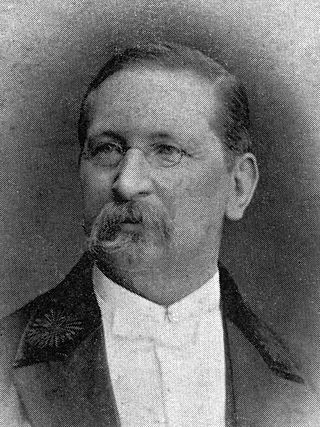
Tord Tamerlan Teodor Thorell was a Swedish arachnologist.
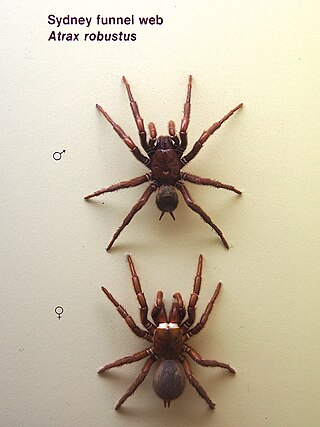
The Sydney funnel-web spider is a species of venomous mygalomorph spider native to eastern Australia, usually found within a 100 km (62 mi) radius of Sydney. It is a member of a group of spiders known as Australian funnel-web spiders. Its bite is capable of causing serious illness or death in humans if left untreated.

Atrax is a genus of venomous Australian funnel web spiders that was first described by O. Pickard-Cambridge in 1877 from the type species Atrax robustus. As of May 2019 it contains only three species: A. robustus, A. sutherlandi, and A. yorkmainorum. Originally placed with the curtain web spiders, it was moved to the Hexathelidae in 1980, then to the Australian funnel-web spiders in 2018.
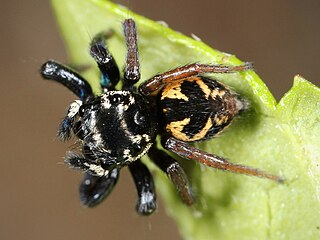
Corythalia is a genus of jumping spiders that was first described by Carl Ludwig Koch in 1850. The genus is distributed throughout most of the Western Hemisphere.

Messua is a spider genus of the family Salticidae.

Idiopidae, also known as armored trapdoor spiders, is a family of mygalomorph spiders first described by Eugène Simon in 1889. They have a large body similar to tarantulas.

Barychelidae, also known as brushed trapdoor spiders, is a spider family with about 300 species in 42 genera.
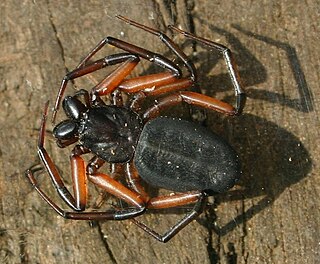
Trochanteriidae is a family of spiders first described by Ferdinand Karsch in 1879 containing about 52 species in 6 genera. Most are endemic to Australia though Doliomalus and Trochanteria are from South America and Plator is from Asia. Platyoides species exist in southern and eastern Africa, Madagascar, and the Canary Islands with one species, P. walteri, introduced to Australia.
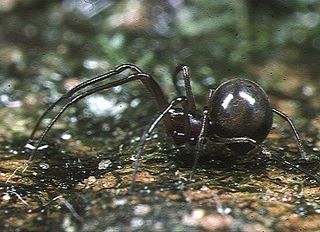
Anapidae is a family of rather small spiders with 232 described species in 58 genera. It includes the former family Micropholcommatidae as the subfamily Micropholcommatinae, and the former family Holarchaeidae. Most species are less than 2 millimetres (0.079 in) long.

Missulena occatoria, known as the red-headed mouse spider, is a species of spider found in Australia, from open forest to desert shrubland. It is the most widely distributed Missulena species, occurring throughout mainland Australia. This is possible because the spiderlings disperse via wind (ballooning). Normally this only occurs with araneomorph spiders, mygalomorph spiders normally disperse by walking. Missulena venom may be very toxic, but few cases of serious envenomation have been recorded. Most recorded bites only caused minor effects, with Australian funnel-web spider antivenom having proved effective as a treatment.

Argyrodes, also called dewdrop spiders, is a genus of comb-footed spiders that was first described by Eugène Louis Simon in 1864. They occur worldwide, and are best known for their kleptoparasitism. They can spin their own webs, but tend to invade and reside in their hosts' webs. This relationship can be commensal or even mutual if the dewdrop spider feeds on small trapped insects that are not eaten by the host. Some species can even prey upon the host.
Eucyrtops is a genus of Australian armoured trapdoor spiders that was first described by Reginald Innes Pocock in 1897.

Missulena insignis, commonly known as the lesser red-headed mouse spider, is a species of spider belonging to the family Actinopodidae native to Australia. The species name is derived from the Latin insignis "mark".
Eucyrtops eremaeus is a species of mygalomorph spider in the Idiopidae family. It is endemic to Australia. It was described in 1957 by Australian arachnologist Barbara York Main.

















